Use your parts library in KiCad
Your parts library can now be used directly in KiCad, providing product lifecycle management functionality, simplifying substitute part handling, and enabling automatic matching of BOM entries when importing from KiCad into PartsBox.
Why is this useful?
While symbols and footprints belong in KiCad, it's not the right place to store all your component data. CAD tools aren't designed to be parts databases or inventory management systems. Adding custom data fields in KiCad is possible, but maintaining consistency across projects is difficult.
What's more, there is no easy way to deal with part substitutes. For some components, you know the exact MPN and you know that it will never change over the lifetime of a project. But for many parts, especially passives, you don't really care about the specific MPN, so you just enter the value ("10k") , and your exported BOMs end up with "10k" as the only description of the component. This makes it difficult to import them into other software for pricing and purchasing. It also means that a lot of time is wasted on selecting the actual passives that will be used in builds. Everyone knows the experience of spending hours on distributors' websites searching for 6k3 resistors and 1μF X5R capacitors.
With this integration, you can create meta-parts for passive components used in your projects. These meta-parts are associated with KiCad symbols and footprints and placed in your schematics. When you're ready to purchase components, you can create a single example part with a specific MPN and add it to the meta-part. PartsBox will suggest additional substitutes ranked by popularity, which you can add with a single click. You can modify your set of substitutes over time without changing your schematics, PCB design, or BOM.
When importing your design back into PartsBox for pricing and purchasing, BOM entries are matched automatically and precisely. Just export the "PartsBox ID" field that contains the ID Anything™ code - a unique identifier that never changes, eliminating mismatches.
How it works
Your KiCad symbols and footprints remain unchanged — PartsBox acts as a data source that references symbols and footprints defined in standard KiCad libraries. PartsBox presents a portion of your parts library to KiCad, organized into categories. When you select a component from the PartsBox library in KiCad, it populates the schematic symbol with data from PartsBox, such as manufacturer part number, value, footprint, and other configured fields.
Once set up, this integration requires no ongoing effort. Your library is accessed online via HTTP as needed. The categories you've configured appear in the KiCad symbol selector, allowing you to place PartsBox parts in your schematics with all the mapped data fields.
To set this up:
- Create an API key in PartsBox
- Configure which parts to show to KiCad in "Settings | CAD Integration | KiCad"
- Define how parts are organized into categories
- Specify data field mappings
PartsBox generates a configuration file (with a ".kicad_httplib" extension) that you place in one of your KiCad library directories. This file contains the API key and tells KiCad how to connect to PartsBox.
PartsBox presents your parts library to KiCad as categories — customized subsets of your database that appear as separate browsable sections in the Symbol Chooser. Each category is defined using PartsBox's filter system, so you can create categories based on:
- Tags
- Part names
- Specifications
- Custom fields
- Any other combination of filters
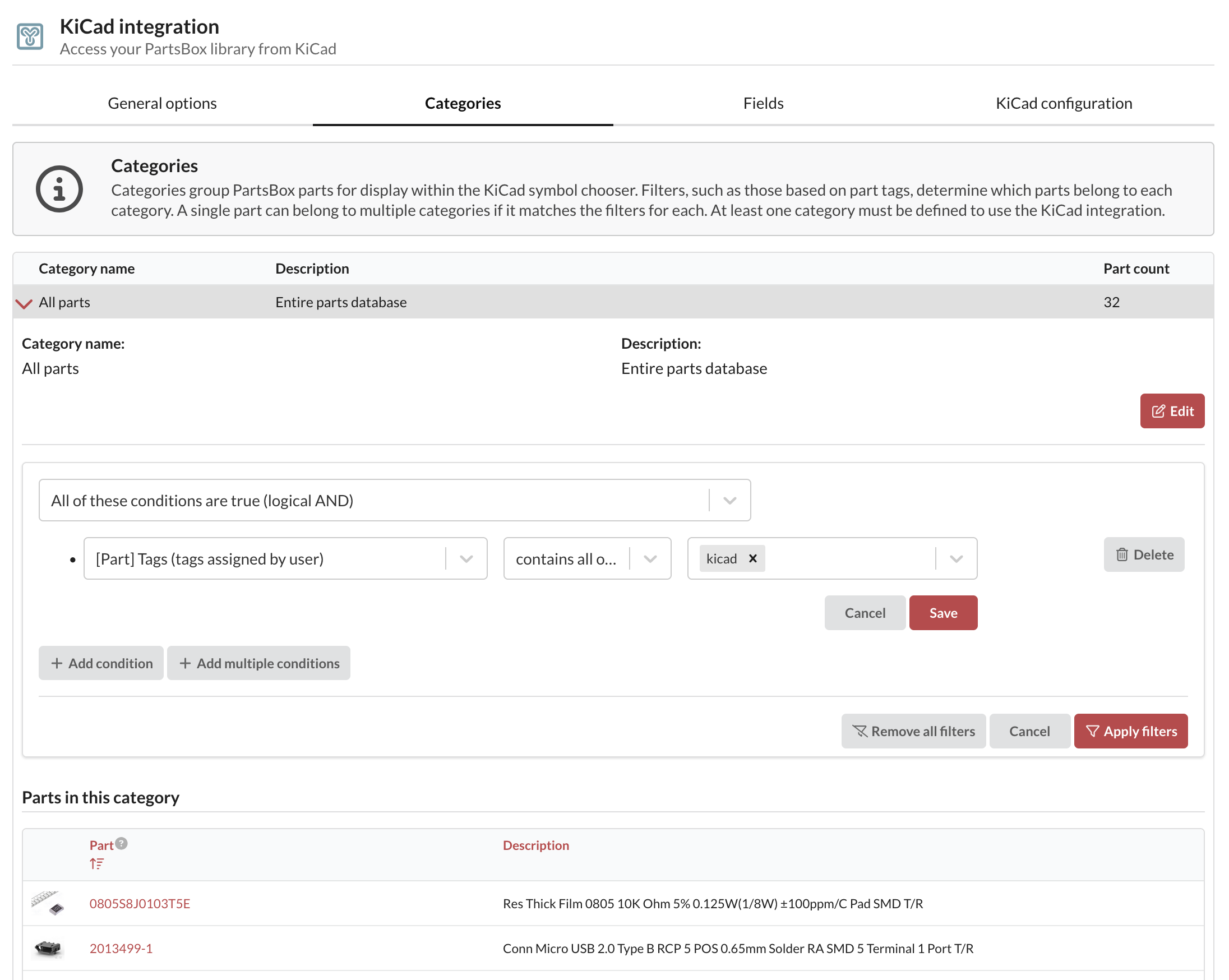
Parts can appear in multiple categories for maximum flexibility. You can also apply a global initial filter to all parts before category-specific filtering, which is useful when you only want to export a small subset of your parts.
Field mappings let you connect any PartsBox field to any KiCad data field. A default set is provided, with three mandatory mappings:
- KiCad symbol — required by KiCad to match the part to symbols in your library
- Part ID Anything™ code — mapped to a PartsBox ID field in KiCad for automatic BOM matching
- Part ID Anything™ URL — lets you press 'd' on any component to open its information page in your browser
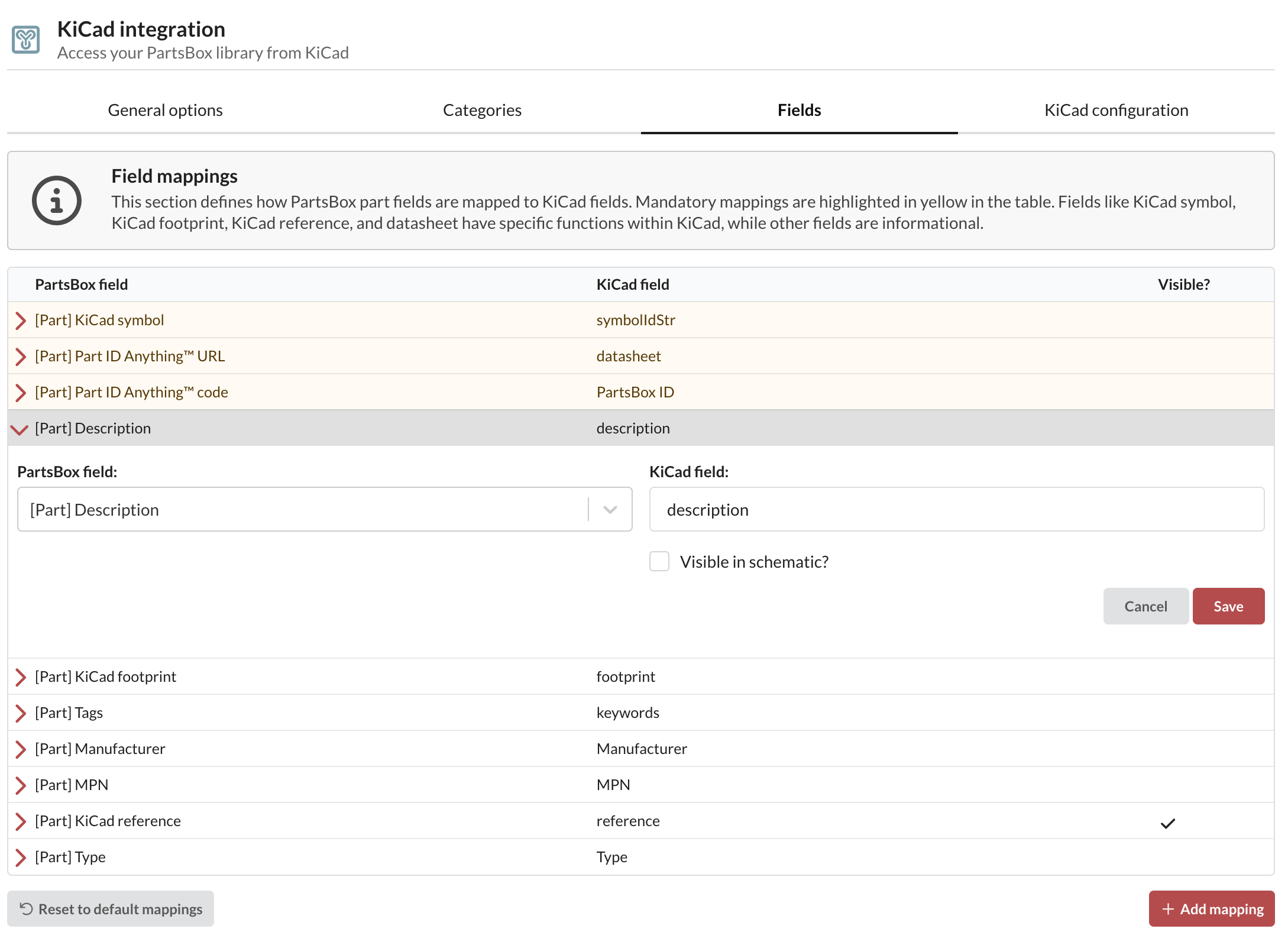
Everything else is optional, though configuring the KiCad reference and footprint is highly recommended.
For each part you plan to use in KiCad, you'll need to configure its symbol, footprint and KiCad reference in "Part Settings | CAD/PLM data" on the part info screen. In the future, you'll be able to set these fields for multiple parts at once.
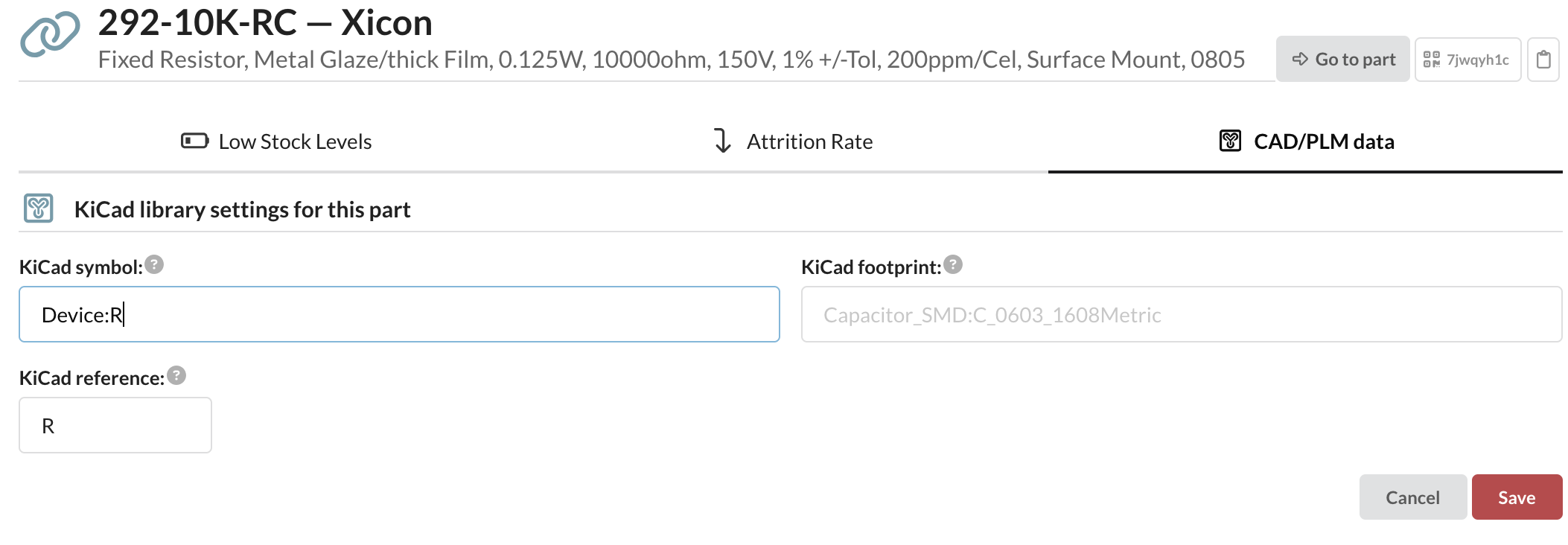
How it looks in KiCad
In KiCad, add the downloaded configuration file to your symbol libraries. Go to "Manage Symbol Libraries…" and add the .kicad_httplib file:
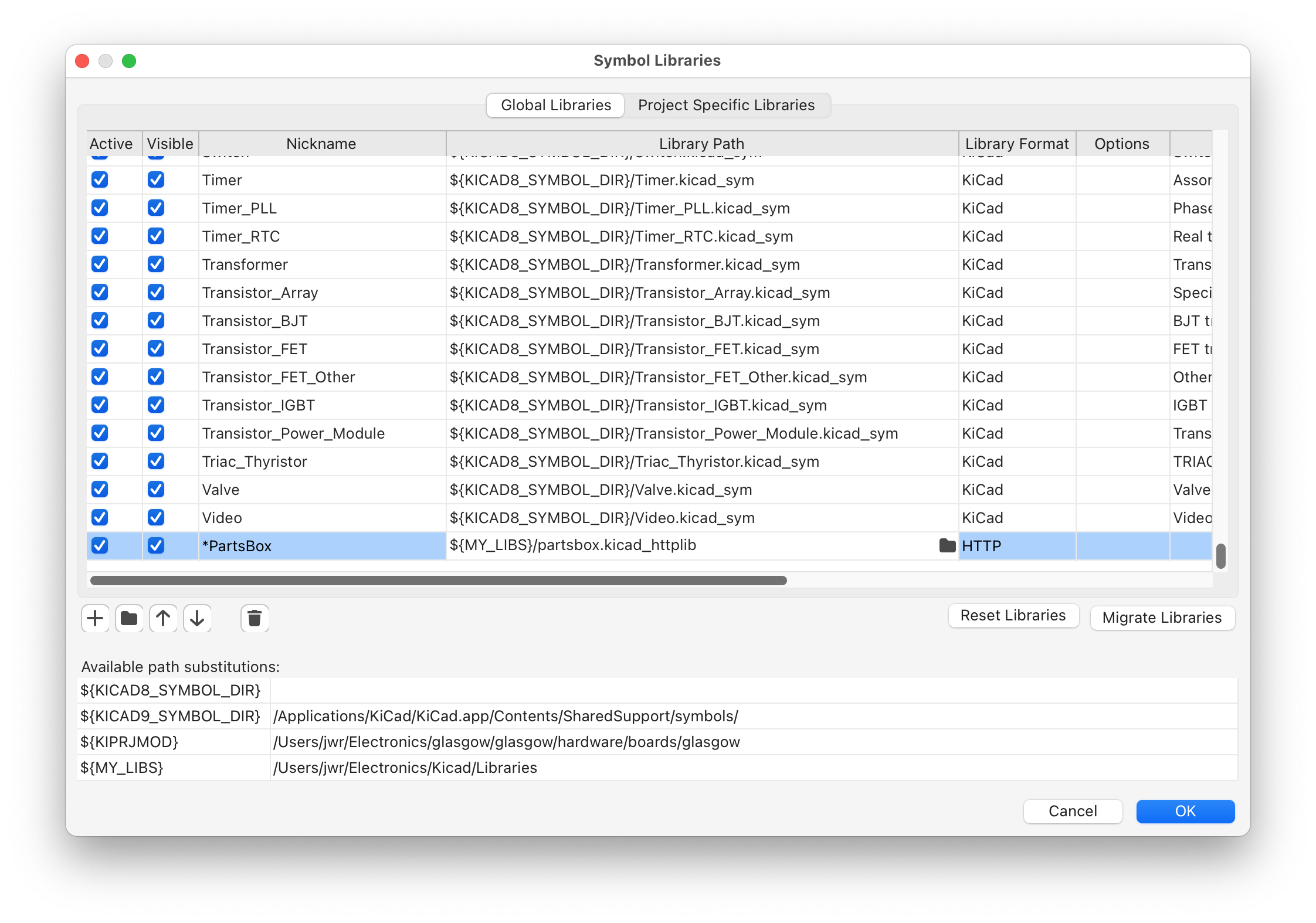
Using a library nickname beginning with a symbol is recommended so it appears first in the "Choose Symbol" dialog.
After that, your categories and parts will be visible in the Choose Symbol dialog!
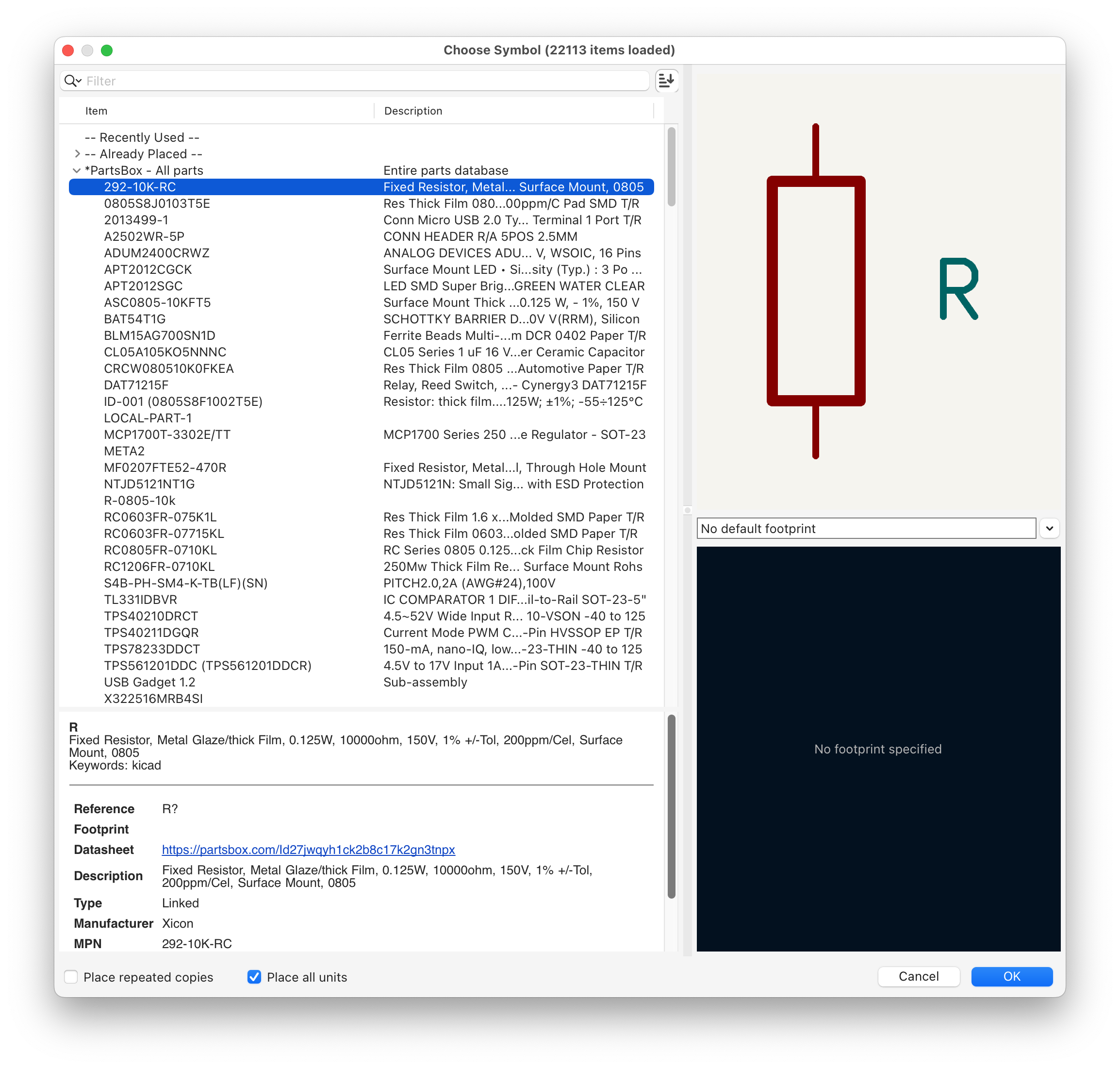
This integration is available to everyone, including users on the free Hobbyist/Maker plan! We've also made custom fields and ID Anything™ available to everyone for free as part of this release.
Earlier blog posts:
PartsBox is an online app that lets you take control of your electronic parts inventory, BOM pricing, and small-scale production. It keeps track of where components are stored, what the current stock levels are, and which components are used in which projects/BOMs.